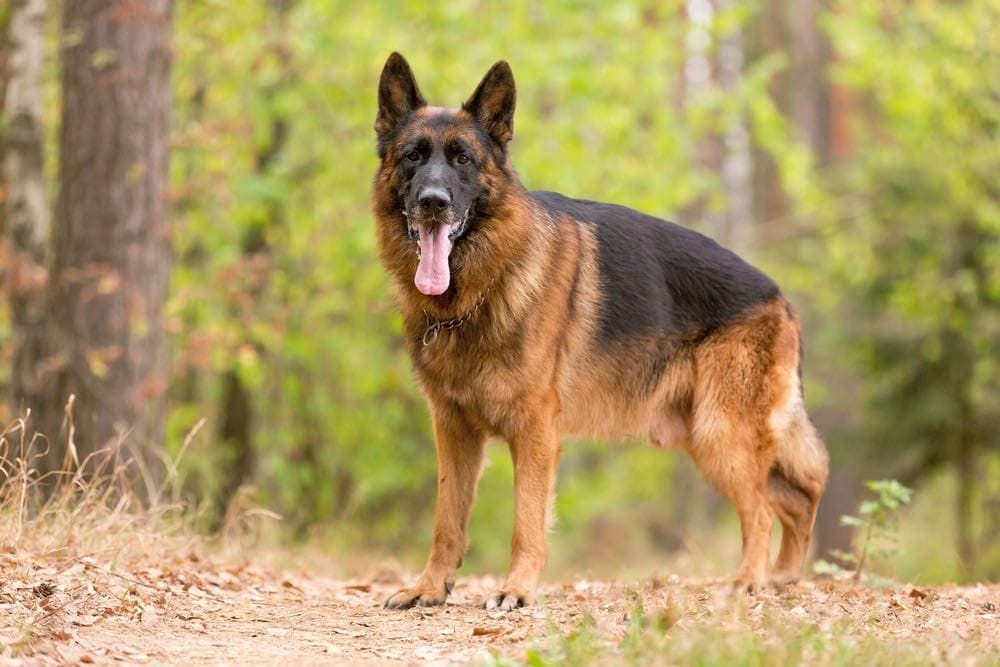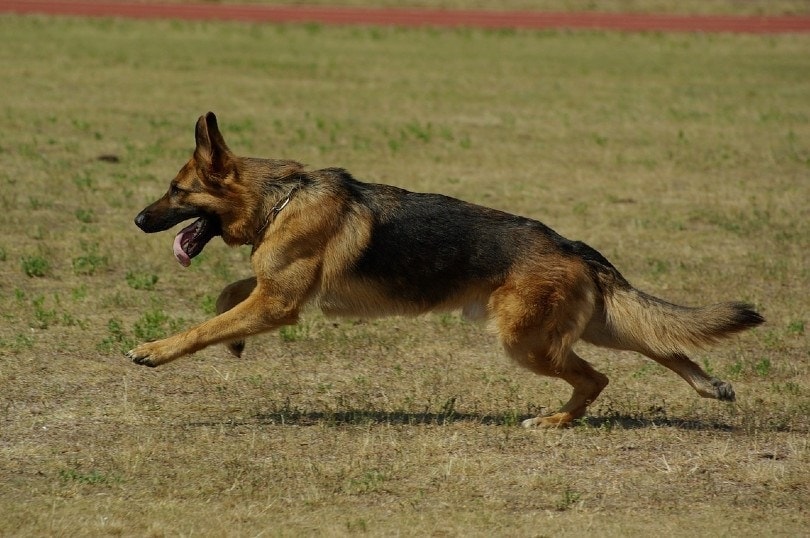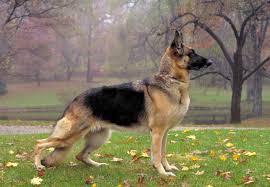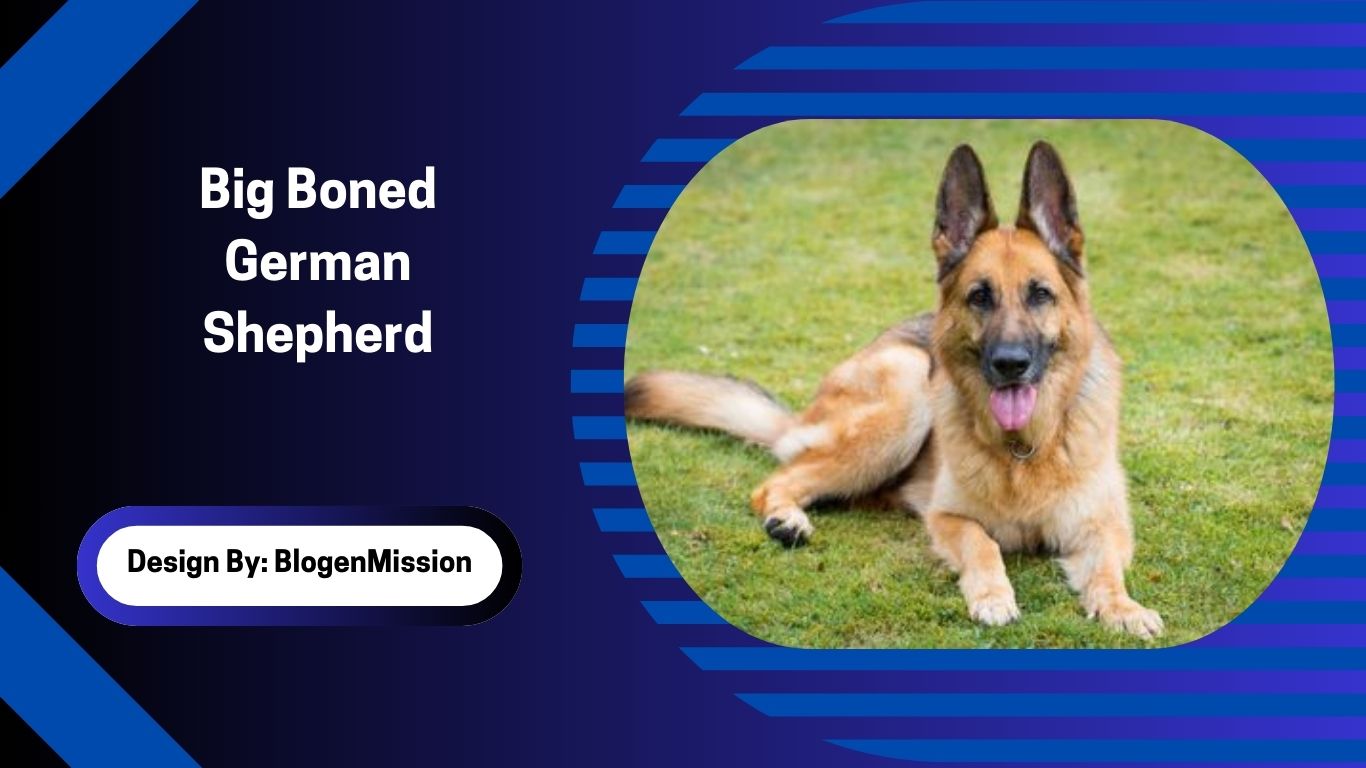A big boned German Shepherd is a larger framed, heavy boned variation of the breed, known for strength, loyalty, and presence. They require proper diet, exercise, and care to stay healthy and happy.
The German Shepherd is one of the most famous dog breeds in the world. People love them for their loyalty, intelligence, and strong working ability. But some German Shepherds look bigger and stronger than others. These are often called Big Boned German Shepherds. They have a large frame, heavy boned body, and an impressive presence.
Some people also call them oversized German Shepherds, giant German Shepherd types, or extra large German Shepherd breeds. If you have ever seen one, you know how powerful and majestic they look.
What is a Big Boned German Shepherd?
A big boned German Shepherd is not a different breed. It is still the same German Shepherd, but with a larger bone structure and wider body size than the average. This is called a large frame German Shepherd.
These dogs are often bred from large working line German Shepherds or certain show line German Shepherd size bloodlines. The difference is in the German Shepherd bone structure — their legs, shoulders, and chest are thicker, giving them a stocky German Shepherd build.
Some people love them for their strong look, but others prefer the standard German Shepherd breed standards. Either way, both types can make amazing pets.
How Big Can German Shepherds Get?

A regular male German Shepherd is usually 24–26 inches tall and weighs 65–90 pounds. Females are 22–24 inches and weigh 50–70 pounds.
A big boned German Shepherd can be slightly taller and much heavier. Many oversized German Shepherds weigh 90–110 pounds for males and 80–100 pounds for females.
This size difference happens because of genetics, diet, and exercise. If you look at a German Shepherd size chart, you can easily compare where your dog stands.
Differences Between Big and Standard German Shepherds
Here are the main differences you may notice:
| Feature | Big Boned German Shepherd | Standard German Shepherd |
| Body Size | Larger frame, broader chest | Leaner, more athletic |
| Bone Structure | Thick legs, heavy skeleton | Medium bone structure |
| Weight | Often heavier than standard range | Within breed standard weight |
| Look | Stocky, powerful appearance | Slim but strong |
Both types are smart, loyal, and loving. The choice comes down to personal preference.
Big Boned vs Overweight German Shepherd
It’s important to understand the difference:
- Big Boned: Large skeleton, naturally heavier even when healthy.
- Overweight: Extra body fat from too much food or little exercise.
An overweight German Shepherd is at risk of many health problems. You can use a German Shepherd weight range guide to see if your dog is healthy. You should also feel their ribs without pressing too hard. This is a quick way to check their body condition.
German Shepherd Growth Stages
Big or small, German Shepherds grow in stages:
- Puppy (0–6 months) Fast growth in height and weight. A big German Shepherd puppy will already look bigger than others of the same age.
- Teen (6–18 months) Growth slows, but muscles start to fill out.
- Adults (18–36 months) They reach full height and keep building muscle.
Knowing these stages helps you plan their diet and exercise so they grow strong and healthy.
Are Big Boned German Shepherds Healthy?
Yes, they can be healthy if cared for properly. However, large breed German Shepherds carry more weight on their joints, which can cause problems like:
- Hip dysplasia
- Elbow dysplasia
- Arthritis in older age
Giving them the right diet, regular exercise, and joint health supplements can help prevent German Shepherd hip and joint issues.
How to Tell if a German Shepherd is Large Framed?
Signs your dog might be a large frame German Shepherd:
- Thick, strong leg bones
- Wide shoulders and chest
- Large paws
- Broad head and neck
If your dog matches these traits from puppyhood, they are likely naturally big boned.
Ideal Weight for Big Boned German Shepherd
The ideal weight depends on gender and bone size:
- Males: 90–110 pounds
- Females: 80–100 pounds
Remember, muscle weighs more than fat. Focus on keeping them lean but strong.
How to Care for a Large German Shepherd?
Caring for a big boned German Shepherd is similar to a standard one but with a few extra points:
- Diet The best diet for big boned German Shepherds is high in protein (meat based), with healthy fats and added joint support supplements like glucosamine.
- Exercise Keep them active to prevent weight gain but avoid over stressing their joints.
- Training Start early so you can control them as they grow large.
Exercise Needs for Large German Shepherds

They need at least 1–2 hours of daily exercise. Good activities include:
- Long walks
- Play fetch
- Swimming (gentle on joints)
- Obedience or agility training (with caution for jumps)
Pros and Cons of Owning a Big German Shepherd
Pros:
- Protective and loyal
- Strong and capable working dogs
- Impressive presence
Cons:
- Higher food and vet costs
- Possible joint problems
- Need more space and training time
Life Expectancy of Big Boned German Shepherd
A big boned German Shepherd generally lives around 9 to 12 years, which is slightly shorter than some smaller dog breeds. This difference happens because larger dogs age faster, and their bodies especially the heart and joints, carry more weight over time.
However, lifespan is not fixed. With proper diet, regular vet checkups, daily exercise, and joint health support, many large German Shepherds live long, active, and happy lives well into their senior years, staying healthy and energetic for as long as possible.
Big Boned German Shepherd Breeding Lines
Some breeders focus on:
- Large working line German Shepherds for police, military, and protection work
- Show line German Shepherds bred for size and appearance
Always choose a breeder who focuses on health, not just size.
Training Tips for Large German Shepherds
- Start training young
- Use positive rewards
- Keep sessions short and fun
- Socialize with people and other dogs early
This will help avoid bad habits and ensure they grow into good family dogs.
Are Large German Shepherds Good Family Dogs?
Yes! A large German Shepherd can be an amazing family dog when trained and socialized properly. They are naturally loyal, protective, and gentle with children. Their strong guarding instincts make them excellent home protectors, but they are also affectionate and eager to please.
Because of their big size and strength, supervision is important when they play with small kids to avoid accidental bumps or knocks. With consistent training, love, and boundaries, they can be both a trustworthy family companion and a reliable protector.
Cost of Owning a Big German Shepherd
Owning one costs more than a smaller dog because:
- They eat more food
- Need bigger beds, crates, and collars
- May require more vet visits for joint care
Grooming Needs for Large German Shepherds

Large German Shepherds often have a thick double coat that sheds all year, with heavier shedding during spring and fall. To keep their coat healthy and reduce hair around your home, brush them 2–3 times a week using a quality grooming brush.
This removes loose hair, prevents matting, and spreads natural oils through their fur. Bathing should only be done when necessary too many baths can dry out their skin. Regular grooming also gives you a chance to check for skin issues, ticks, or fleas.
Big Boned German Shepherd Temperament
A big boned German Shepherd has a personality that’s both strong and loving. They are confident, brave, and naturally protective, making them excellent guard dogs. At the same time, they are deeply loyal and form strong bonds with their family.
These dogs are quick learners who enjoy training because they love pleasing their owners. With the right socialization, they can be calm and friendly with guests, children, and other pets. This balanced temperament makes them great for both family life and working roles such as service, police, or protection work.
Health Problems in Oversized German Shepherds
Potential issues include:
- Hip and elbow dysplasia
- Arthritis
- Bloat (twisted stomach)
- Heart problems in old age
Regular vet checkups and a healthy lifestyle can help prevent many of these problems.
FAQs:
1. How do I know if my German Shepherd is big boned?
Check for thick legs, broad chest, large paws, and a strong skeletal frame. Compare breed standards and size charts to confirm your dog’s frame is naturally larger, not overweight.
2. Do big boned German Shepherds need special food?
Yes, they benefit from high protein diets with healthy fats and joint support supplements. This helps maintain muscle, prevent excess weight, and support their larger bones and joints for long term health.
3. Can a big boned German Shepherd live in an apartment?
Yes, if they get enough daily exercise and mental stimulation. They need walks, playtime, and training. Lack of activity in small spaces can lead to restlessness and unwanted behaviors.
4. Are big boned German Shepherds more protective?
They can appear more intimidating due to size, but protection instincts depend on training and socialization. A well trained big boned GSD can be calm yet alert, making them excellent family protectors.
5. Do big boned German Shepherds shed more than standard ones?
Shedding is usually the same for both, but those with thicker coats may seem to shed more. Regular brushing helps control shedding and keeps their fur healthy year round.
Conclusion
The big boned German Shepherd is a stunning and powerful version of a beloved breed. With their large frame, strong bone structure, and loyal temperament, they are perfect for experienced owners who can meet their needs. While they require more space, food, and joint care, they reward you with unmatched companionship and protection. With the right diet, exercise, and training, these gentle giants can thrive as both loyal family members and dependable working dogs, bringing years of love and security.
Related Post:
- Cat Food Canned – Ultimate Guide!
- Why Is My Cat Not Drinking Water – Causes, Risks & Solutions!
- How To Get Ants Out Of Cat Food – Safe, Smart Solutions for Pet Owners!
